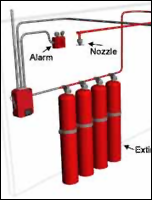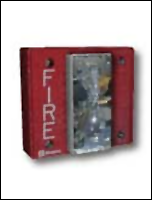Evacuation Plans and Procedures eTool
Evacuation Plans and Procedures » Emergency Standards
How do I evaluate my workplace to comply with OSHA's emergency standards?
The best way to protect yourself and others is to prepare for an emergency before it happens by doing a thorough assessment of the workplace. Think about possible emergency situations and evaluate your workplace to see if it is sufficiently prepared in the following areas:
Design and Construction Requirements for Exit Routes
This section contains requirements for the design and construction of exit routes. It also addresses the capacity, height and width of exit routes, and finally, it sets forth requirements for exit routes that are outside a building. [29 CFR 1910.36]
Maintenance, Safeguards, and Operational Features for Exit Routes
This section includes the safe use of exit routes during an emergency, lighting and marking exit routes, fire retardant paints, exit routes during construction, repairs, or alterations, and employee alarm systems. [29 CFR 1910.37]
Emergency Action Plans (EAP)
An emergency action plan (EAP) is a written document required by particular OSHA standards. The purpose of an EAP is to facilitate and organize employer and employee actions during workplace emergencies. [29 CFR 1910.38]
Fire Prevention Plans (FPP)
The purpose of the fire prevention plan is to prevent a fire from occurring in a workplace. It describes the fuel sources (hazardous or other materials) on site that could initiate or contribute both to the spread of a fire, as well as the building systems, such as fixed fire extinguishing systems and alarm systems, in place to control the ignition or spread of a fire. [29 CFR 1910.39]
Portable Fire Extinguishers
Workplace fires and explosions kill hundreds and injure thousands of workers each year. One way to limit the amount of damage due to such fires is to make portable fire extinguishers an important part of your fire prevention program. [29 CFR 1910.157]
Fixed Extinguishing Systems
Fixed fire extinguishing/suppression systems are commonly used to protect areas containing valuable or critical equipment such as data processing rooms, telecommunication switches, and process control rooms. [29 CFR 1910.160]
Fire Detection Systems
Automatic fire detection systems, when combined with other elements of an emergency response and evacuation plan, can significantly reduce property damage, personal injuries, and loss of life from fire in the workplace. [29 CFR 1910.164]
Employee Alarm Systems
The purpose of the employee alarm systems standard is to reduce the severity of workplace accidents and injuries by ensuring that alarm systems operate properly and procedures are in place to alert employees to workplace emergencies. [29 CFR 1910.165]









